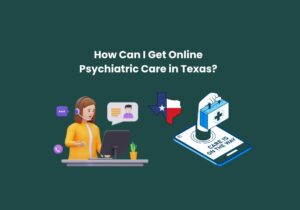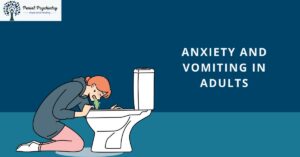Therapy for abandonment trauma can help you feel safe after deep hurt. This pain often starts in childhood. It may come from being ignored, left out, or not feeling loved. It can also come from losing someone close later in life. Many people with this trauma fear being left again. They may have trust issues or feel anxious in close bonds. Some people push others away first to avoid getting hurt again. These are not just bad habits. They are signs of old wounds. But there is hope. With the right help, you can heal, feel calm, and build strong, healthy ties with others.
What Is Abandonment Trauma?
Abandonment trauma is the deep emotional pain people feel when someone essential leaves or lets them down. It’s not just about being alone; it’s about feeling unsafe, forgotten, or unloved. Many people carry this pain without even knowing it.
Where It Starts and What It Feels Like
Abandonment trauma often begins early in life. A child might go through emotional abandonment if their parents don’t show love, support, or care. Some kids face childhood neglect, where no one listens, hugs, or comforts them. Others might lose a parent to divorce, death, or separation. These early experiences can shape how a person sees love, safety, and connection.
But this trauma doesn’t only start in childhood. Adults can also feel this pain. A sudden breakup, betrayal, or the loss of someone close can open up the same deep fear of being left again. This fear can cause attachment issues later in life.
People with abandonment trauma often expect others to leave. They may cling too tightly or push people away. Some stop trusting others. Some don’t trust themselves.
This trauma lives deep inside. It’s not about being “too sensitive.” It’s a real emotional wound. And if left untreated, it can affect every part of life, friendships, love, and even self-worth.
Signs and Symptoms of Abandonment Trauma
Abandonment trauma can affect people in many ways. It changes how they feel, think, and behave. Some signs are easy to notice. Others are hidden inside. Knowing these signs can help people understand themselves better and find the proper support to heal.
Fear of Rejection and Trust Issues
Many people with abandonment trauma live with a constant fear that others will leave them. This fear often shows as a fear of rejection. They may worry that a partner, friend, or family member will suddenly disappear. Because of this, they might cling tightly to people or seek constant reassurance. At the same time, some push others away before they can be hurt. This makes trusting others very hard. They may keep their feelings closed off or avoid close relationships. These trust issues can make it challenging to build strong, healthy bonds.
People-Pleasing and Emotional Struggles
Another common sign is people-pleasing. Some try too hard to be liked or accepted. They worry that if they don’t make others happy, they will be abandoned. Emotionally, many feel anxious, sad, or overwhelmed. They might have emotional flashbacks, sudden waves of old pain that seem to come out of nowhere. These feelings can cause mood swings or make everyday life feel harder. Over time, these emotional struggles take a significant toll on self-esteem and well-being.
Self-Sabotage and Physical Symptoms
Abandonment trauma can also lead to self-sabotage in relationships. People may create fights or end connections before the other person can leave first. This helps them feel some control over their pain. Sometimes, the stress from these feelings causes physical problems. Panic attacks, headaches, or stomach aches can appear without a clear cause. These symptoms show just how deeply abandonment trauma can affect both the mind and body.
If you notice any of these signs, it’s okay. You’re not alone. Understanding these feelings is the first step. With the right help, you can start to feel safe and build trust again.
How Therapy Helps Heal Abandonment Trauma
Therapy can play a significant role in healing abandonment trauma. It provides people with a safe space to explore their emotions and begin to trust again. The proper treatment helps change old patterns and build new ways of connecting with others.
Providing a Safe Space to Process Emotions
Therapy creates a space where people can share their pain without fear of judgment. Many with abandonment trauma carry deep worries and hurt. Talking openly helps bring these feelings out. Therapists listen and support you as you explore your past and how it affects you today. This safe space is the first step to feeling secure and understood.
Learning New Ways to Cope and Trust
Therapists teach skills to handle fear and anxiety that come from abandonment trauma. You can learn how to calm yourself during moments of panic or stress. Therapy also helps you understand how your past shapes your reactions today. This awareness lets you slowly build trust in yourself and others. Over time, therapy helps replace old, painful patterns with healthier habits.
Read on to discover a simple anxiety diet and exercise plan. These tips can help calm your mind, ease stress, and support your mental health one small step at a time.
Changing Negative Beliefs and Building Resilience
Abandonment trauma often creates negative beliefs like “I’m not worthy” or “People will always leave me.” Therapy helps identify and change these thoughts. Through various therapy methods, you can gain a kinder, more realistic perspective on yourself. This shift strengthens your emotional resilience. It helps you feel stronger when facing challenging emotions or relationships.
Healing abandonment trauma takes time. But therapy offers a clear path forward. It helps you move from fear to safety and from pain to connection.
Best Types of Therapy for Abandonment Trauma
Not all therapy is the same. Different methods help heal abandonment trauma in various ways. Finding the correct type of therapy can make a big difference. Here are some of the best approaches that therapists use to help people feel safe and build trust again.
Cognitive Behavioral Therapy (CBT)
CBT helps people change the way they think and react to their feelings. When someone has abandonment trauma, they may believe things like “I am not worthy” or “Everyone will leave me.” Cognitive Behavioral Therapy (CBT) works to challenge these negative thoughts. It helps replace them with kinder, more balanced ideas. This therapy also teaches practical skills to handle anxiety and trust issues. CBT is a popular choice because it provides practical tools you can use daily to improve your mood and foster stronger relationships.
EMDR (Eye Movement Desensitization and Reprocessing)
EMDR is a therapy that helps the brain process painful memories differently. For people with abandonment trauma, specific memories can cause intense fear or flashbacks. EMDR uses guided eye movements to help reduce the emotional power of these memories. It can make the past hurt feel less overwhelming. Many people find EMDR effective because it helps calm intense emotions and makes it easier to move forward.
Attachment-Based and Inner Child Therapy
These therapies focus on healing the early wounds that cause abandonment trauma. Attachment-based therapy helps people understand how early relationships shape their feelings and behavior today. It teaches how to form healthier bonds with others. Inner child therapy invites people to reconnect with the hurt parts of themselves from childhood. By caring for their “inner child,” they can heal old pain and build self-love. Both approaches help people feel safer in their relationships and inside themselves.
Each of these therapy types can help you heal abandonment trauma in different ways. A skilled therapist will guide you to the right approach for your needs. Healing takes time, but with support, you can build a life filled with trust and peace.
How Long Does It Take to Heal Abandonment Trauma?
Healing abandonment trauma takes different amounts of time for other people. Many factors affect the process. Knowing what to expect can help you stay patient and kind to yourself as you work toward feeling better.

Everyone Heals at Their Own Pace
There is no set timeline for healing abandonment trauma. Some heal faster, while others take more time. Your past, the depth of your trauma, and your support system all play a role. Healing is not a straight line. You might feel better one day and struggle the next. This is normal. The key is to keep moving forward, even with small steps.
Consistency in Therapy and Self-Care Matters
Regular therapy sessions help speed up healing. When you work consistently with a therapist, you learn skills and safely face emotions. Self-care outside therapy also supports healing. This can include healthy habits like good sleep, exercise, and time with supportive people. The more you care for yourself, the stronger you become emotionally.
Signs You Are Healing
You may notice changes as healing happens. You might start trusting others more. Setting boundaries may feel easier. Your anxiety about being left can reduce over time. Healing often brings a new sense of calm and confidence in relationships. These signs show you are making progress, even if it feels slow.
Read on to learn how anxiety attacks can lead to memory loss, why it happens, and what you can do to feel more in control and clear-headed again.
When to Seek Professional Help
Sometimes, the pain from abandonment trauma feels too heavy to carry alone. Knowing when to ask for help can change your life. Therapy can guide you through hard feelings and help you find peace. Here are signs that it’s time to reach out.
You Fear Being Left Constantly
If you worry all the time that people will leave you, it’s a sign that you might need support. This fear can make you feel anxious or lonely even when no one is going away. Therapy helps you understand these feelings and teaches ways to feel safer in your relationships.
You Struggle with Relationships and Emotions
Abandonment trauma can cause problems with trusting others or managing emotions. If you find it hard to keep friendships or romantic relationships, or if your feelings often feel overwhelming, therapy can help. It provides you with tools to build healthier bonds and manage your emotions more effectively.
You Experience Physical Symptoms or Low Self-Worth
Sometimes, abandonment trauma shows in your body. Panic attacks, headaches, or stomach pain may happen without an apparent reason. You might also feel low self-esteem or blame yourself for things outside your control. A therapist can help you understand these symptoms and work toward healing.
Read on to learn the symptoms of Major Depressive Disorder. This short guide breaks down the signs in simple words, so you can understand what to look out for.
Remember, asking for help is a sign of strength, not weakness. If any of these signs sound familiar, consider reaching out to a professional. You deserve support and healing.
Get Help at Peniel Psychiatry
Finding the right help is a key part of healing abandonment trauma. At Peniel Psychiatry, we offer caring support to guide you through your journey. Our therapists understand how deep this pain can be and work with you to find the best path forward.
Compassionate, Trauma-Informed Therapists
Our therapists specialize in trauma and attachment issues. They listen with care and respect. They know that abandonment trauma can affect many parts of your life. At Peniel Psychiatry, you will find a safe space where your feelings matter. We work with you to understand your experiences and build trust step by step.
Personalized Treatment Plans
We know each person’s story is different. That’s why we create treatment plans just for you. Our therapists use proven therapy types like CBT, EMDR, and attachment-based therapy. We focus on what will help you most. You will have clear goals and support every step of the way.
Flexible Care Options for Your Comfort
We offer both virtual and in-person therapy sessions. This way, you can choose what feels safest and easiest for you. Whether you prefer to meet online from home or visit us in person, we make it simple to get the help you need. Peniel Psychiatry is here to support your healing journey.
You don’t have to face abandonment trauma alone. Peniel Psychiatry is ready to help you build safety, trust, and peace in your life. Book your appointment today and start healing.
Frequently Asked Questions (FAQs)
What is abandonment trauma?
Abandonment trauma is the deep fear and pain caused by being left or emotionally neglected, often starting in childhood or after a breakup.
How does abandonment trauma affect relationships?
It can cause trust issues, fear of rejection, anxiety, and patterns like people-pleasing or pushing others away.
Can therapy help heal abandonment trauma?
Yes, Therapy offers a safe space to process emotions, learn new coping skills, and build healthy connections.
How long does healing take?
Healing time varies by person. Consistent therapy and self-care help speed the process, but patience is key.
When should I seek professional help?
If fear, anxiety, or relationship struggles affect your life profoundly, reaching out to a therapist is a strong step toward healing.
Final Thoughts
Healing from abandonment trauma is possible. It takes time, patience, and support. Therapy helps you move past fear and build trust with yourself and others. You don’t have to stay stuck in old pain. Each small step brings you closer to safety and peace.
Remember, you are not alone. Many people have faced similar struggles and found hope through therapy. Taking that first step can feel hard, but it can also change your life.
So, how will you start shaping your healing today?




